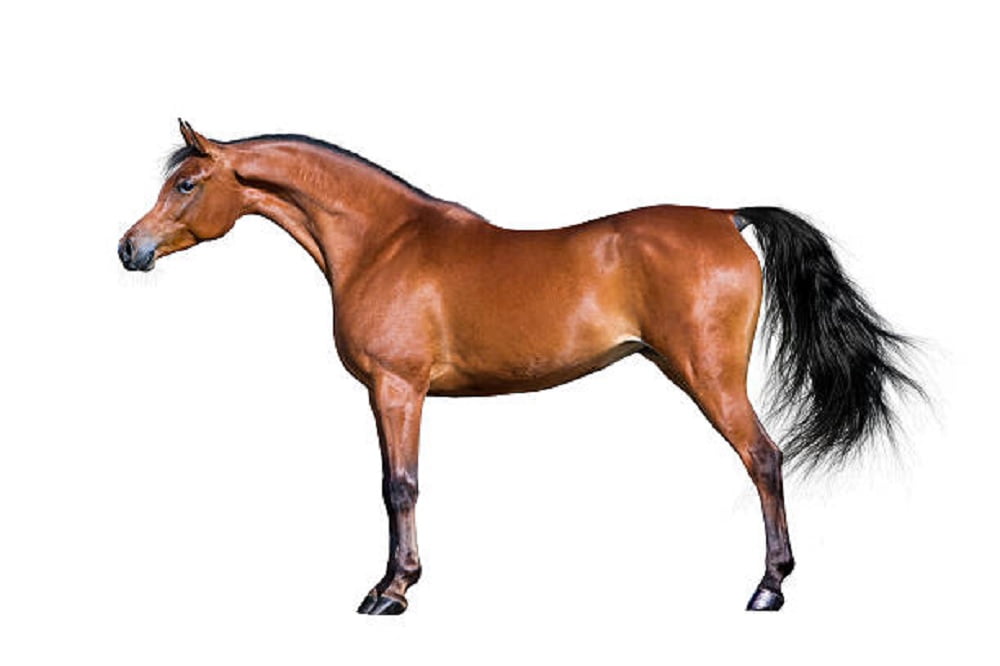Arabian horses, often referred to as the “world’s oldest breed,” have captivated the hearts of equestrians for centuries. Renowned for their distinctive appearance, incredible endurance, and rich history, these horses stand as a symbol of beauty, grace, and enduring spirit. In this blog post, we’ll delve into the captivating world of Arabian horses, exploring their origins, characteristics, colors, and their enduring legacy.

Origins and History
Arabian horses trace their roots back to the deserts of the Arabian Peninsula, with a lineage that spans over 2,000 years. Their history is intertwined with that of Bedouin tribes, who cherished these animals for their hardiness and loyalty.
These horses were not only essential for transportation and survival but were also considered members of the Bedouin families. Their names often reflected their esteemed position, with titles such as “Kuhaylan,” “Dahman,” and “Muniqi” still echoing through the generations.
Distinctive Characteristics
Arabian horses are known for their distinctive features, which make them instantly recognizable:
Head: They boast a dished face with expressive, wide-set eyes and a delicately shaped muzzle.
Elegance: Arabians have a naturally high tail carriage, giving them an unmistakable air of elegance.
Compact Build: These horses are known for their compact, muscular bodies and short black, giving them remarkable agility.
Endurance: Arabian horses are famous for their incredible stamina, which has made them prized in endurance riding competitions.
Colors of Arabian Horses
Arabian horses come in a variety of colors, with the most common being bay, gray, and chestnut. However, they can also be found in black, roan, and even sabino patterns. The Arabian Horse Association recognizes a wide range of coat colors and patterns. Their distinctive colors, combined with their striking features, further enhance their allure.
Temperament
Arabian horses are renowned for their friendly and intelligent nature. They form strong bonds with their human companions and are known for their loyalty. They are often seen as spirited but trainable, making them an excellent choice for riders of all levels.
Common Uses
Arabian horses are versatile and excel in various equestrian disciplines. They are often seen in:
Endurance Riding: Their endurance and stamina make them ideal for long-distance riding.
Dressage: Their agility and responsiveness make them valuable in the world of dressage.
Showmanship: Arabians frequently shine in halter and showing events, showcasing their distinctive features and presence.
The Arabian Horse’s Legacy
The Arabian horse’s legacy is celebrated worldwide. Its influence on horse breeding is immeasurable, and its enduring qualities continue to inspire equestrians of all backgrounds. Today, Arabians can be found in many parts of the world, often competing and impressing with their elegance and performance.
In conclusion, Arabian horses are more than a breed; they are a symbol of tradition, elegance, and endurance. Their rich history, unique characteristics, and beautiful coat colors have made them beloved companions and champions in the world of equestrian sports. Whether you’re a seasoned horse enthusiast or a newcomer to the equestrian world, the Arabian horse’s timeless beauty and remarkable qualities are sure to leave an indelible mark on your heart.
ABOUT
The Arabian or Arab horse is a breed of horse that originated on the Arabian Peninsula. With a distinctive head shape and high tail carriage, the Arabian is one of the most easily recognizable horse breeds in the world.
Mass: 450 kg (Adult)
Height: 1.4 – 1.6 m (Adult, At Shoulder)
Color: Bay, black, chestnut, or gray. Occasional dominant white, sabino, or rabicano patterns
Distinguishing features: Finely chiseled bone structure, concave profile, arched neck, comparatively level croup, high-carried tail
Distribution: Worldwide from West Asia and North Africa origins

